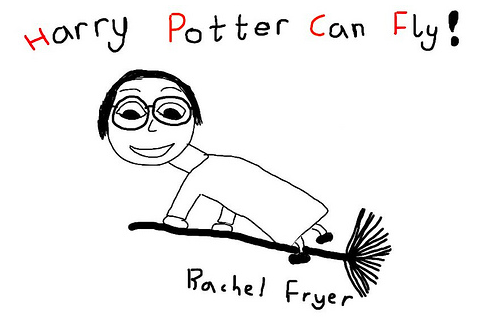This week in the computer lab we have been discussing the Digital Content area of Digital Citizenship. Digital Content refers to all the information that is available on the internet. Google announced in July, 2008, there were over one trillion websites! That was over three years ago before anyone in my district had their own blog. Now EVERY faculty member in my district has at least one blog. Every 3rd through 12th grade student has their own blog. All that means is there is A LOT of information available online. The students are understanding to be a good digital citizen, they need to know three things about that content: It is not all Good, It is not all True, and It is not all Free! We talk about what their response should be when something inappropriate appears on their screen (Immediately get up and leave the computer. Do NOT go back until an adult has taken care of it). We also discuss how “friending” someone they do not personally know on a social networking site is like opening the door of their home to a stranger. The students learn from this website that not everything they find on the internet is true. They must EVALUATE the website to determine how reliable the information is. Then we spend some time talking about the copyright law. Students learn that the moment something is created and takes a tangible form, it is automatically protected by the copyright law. In that discussion, they learn about Creative Commons. Creative Commons allows the creator to determine exactly how they want their creative work protected while allowing others to use it without their permission. Students learn that there is a doctrine called Fair Use that allows people to use a small portion of copyrighted works without the owner’s permission if it is used to teach, report the news, parody, or for critical comment. If they claim Fair Use of someone’s creative work, they should always site the source of their information. We talk about how some information is in the Public Domain.
The students at White Oak Intermediate School have decided to follow the advice of Wes Fryer and
 The H stands for home made. Take your own picture or create your own clip art in a drawing program like Tuxpaint. The P stands for Public Domain. If you cannot create it yourself, first search in the public domain. The C stands for Creative Commons. If you cannot create it yourself or find it in the public domain, search in creative commons. The F stands for Fairuse. If you cannot create it yourself or find it in the public domain or creative commons, the Fair Use Doctrine states you may use a small portion of someone elses copyrighted work if it is for the purpose of teaching. Be sure to site your source!
The H stands for home made. Take your own picture or create your own clip art in a drawing program like Tuxpaint. The P stands for Public Domain. If you cannot create it yourself, first search in the public domain. The C stands for Creative Commons. If you cannot create it yourself or find it in the public domain, search in creative commons. The F stands for Fairuse. If you cannot create it yourself or find it in the public domain or creative commons, the Fair Use Doctrine states you may use a small portion of someone elses copyrighted work if it is for the purpose of teaching. Be sure to site your source!